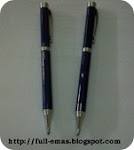Ultrasonic gold testing is an increasingly popular method in the jewelry world. This method uses high-frequency sound waves to analyze the properties of materials, including gold.
How does it work?
The basic principle of ultrasonic testing is to send sound waves into the material to be tested. These sound waves will then be reflected back when they hit the boundary between two different materials, such as gold and its coating. The time it takes for the sound waves to return and the pattern of their reflection will provide information about:
- Layer thickness: By measuring the time it takes for sound waves to pass through the layer and return, the layer thickness can be determined very accurately.
- Material density: The speed of sound waves in a material is affected by the density of the material. Thus, the density of the material can be estimated.
- Presence of defects: If there are defects or cracks in the material, sound waves will be obstructed or deflected, resulting in different reflection patterns.
Advantages of Ultrasonic Testing
- Non-destructive: This method does not damage the material being tested, making it ideal for high-value jewelry.
- Accurate: Thickness and density measurements can be performed with a very high degree of accuracy.
- Fast: The testing process can be done quickly, making it efficient on an industrial scale.
- Non-invasive: Testing can be performed without damaging the material surface.
Applications in Gold Testing
- Checking the thickness of the coating: Ultrasonic testing is very useful for checking the thickness of the gold coating on gold plated jewellery.
- Detecting defects: This method can be used to detect internal defects such as cracks or cavities in gold bars or jewelry.
- Distinguishing between real and fake gold: By comparing the speed of sound waves in the material being tested with the reference value for pure gold, it can be determined whether the material is real gold or not.
Limitations
- The surface must be smooth: The surface of the material to be tested must be smooth enough for sound waves to propagate properly.
- Special equipment: Special, fairly expensive equipment is required to perform ultrasonic testing.
- Trained operator: Interpretation of test results requires skill and experience.







.jpeg)
![[Most Recent Quotes from www.kitco.com]](http://www.kitconet.com/charts/metals/gold/t24_au_en_usoz_2.gif)






0 Comments:
Post a Comment